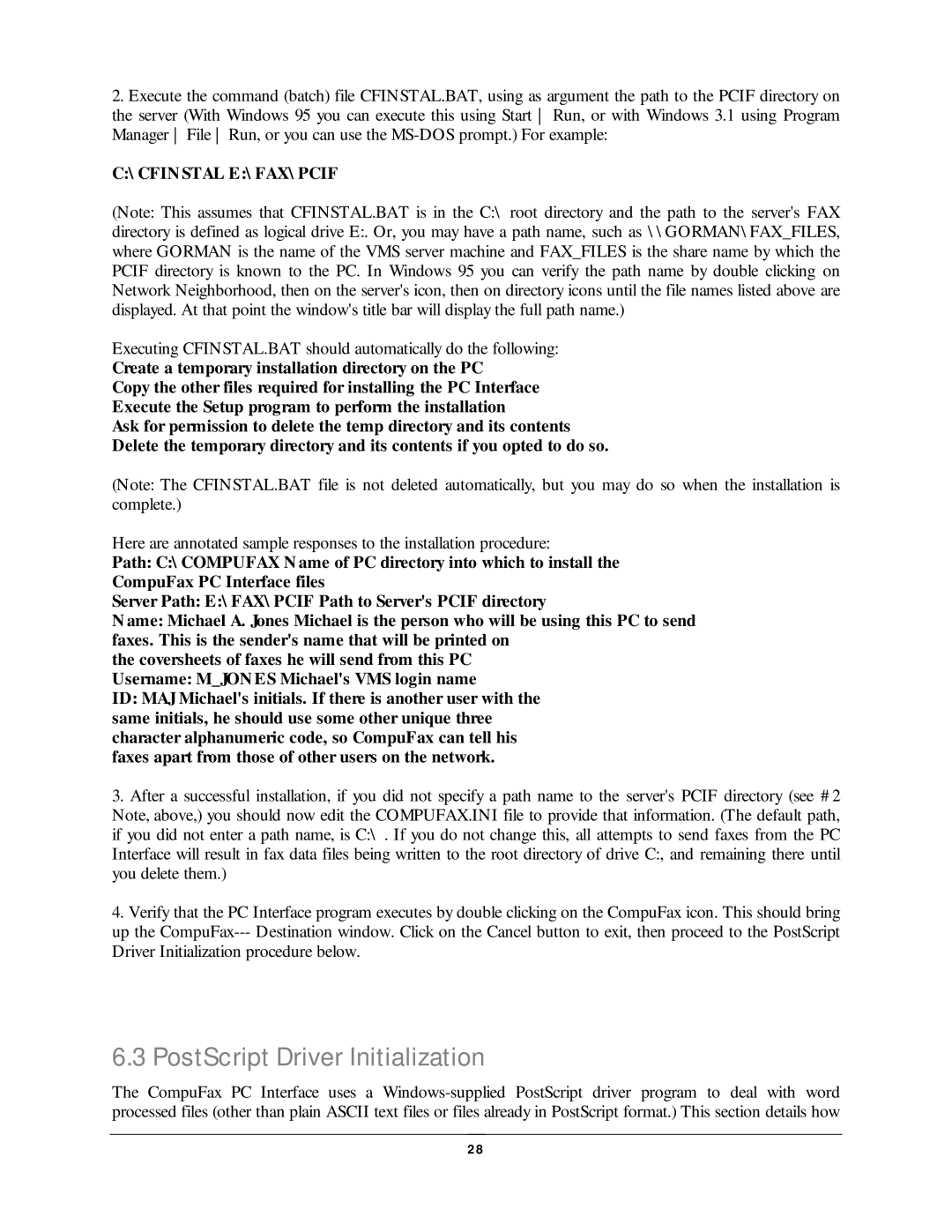2.Execute the command (batch) file CFINSTAL.BAT, using as argument the path to the PCIF directory on the server (With Windows 95 you can execute this using Start Run, or with Windows 3.1 using Program Manager File Run, or you can use the
C:\ CFIN STAL E:\ FAX\ PCIF
(Note: This assumes that CFINSTAL.BAT is in the C:\ root directory and the path to the server's FAX directory is defined as logical drive E:. Or, you may have a path name, such as \ \ GORMAN\ FAX_FILES, where GORMAN is the name of the VMS server machine and FAX_FILES is the share name by which the PCIF directory is known to the PC. In Windows 95 you can verify the path name by double clicking on Network Neighborhood, then on the server's icon, then on directory icons until the file names listed above are displayed. At that point the window's title bar will display the full path name.)
Executing CFINSTAL.BAT should automatically do the following:
Create a temporary installation directory on the PC
Copy the other files required for installing the PC Interface
Execute the Setup program to perform the installation
Ask for permission to delete the temp directory and its contents
Delete the temporary directory and its contents if you opted to do so.
(Note: The CFINSTAL.BAT file is not deleted automatically, but you may do so when the installation is complete.)
Here are annotated sample responses to the installation procedure:
Path: C:\ COMPUFAX N ame of PC directory into which to install the CompuFax PC Interface files
Server Path: E:\ FAX\ PCIF Path to Server's PCIF directory
N ame: Michael A. Jones Michael is the person who will be using this PC to send faxes. This is the sender's name that will be printed on
the coversheets of faxes he will send from this PC Username: M_JON ES Michael's VMS login name
ID: MAJ Michael's initials. If there is another user with the same initials, he should use some other unique three character alphanumeric code, so CompuFax can tell his faxes apart from those of other users on the network.
3.After a successful installation, if you did not specify a path name to the server's PCIF directory (see # 2 Note, above,) you should now edit the COMPUFAX.INI file to provide that information. (The default path, if you did not enter a path name, is C:\ . If you do not change this, all attempts to send faxes from the PC Interface will result in fax data files being written to the root directory of drive C:, and remaining there until you delete them.)
4.Verify that the PC Interface program executes by double clicking on the CompuFax icon. This should bring up the
6.3 PostScript Driver Initialization
The CompuFax PC Interface uses a
2 8
